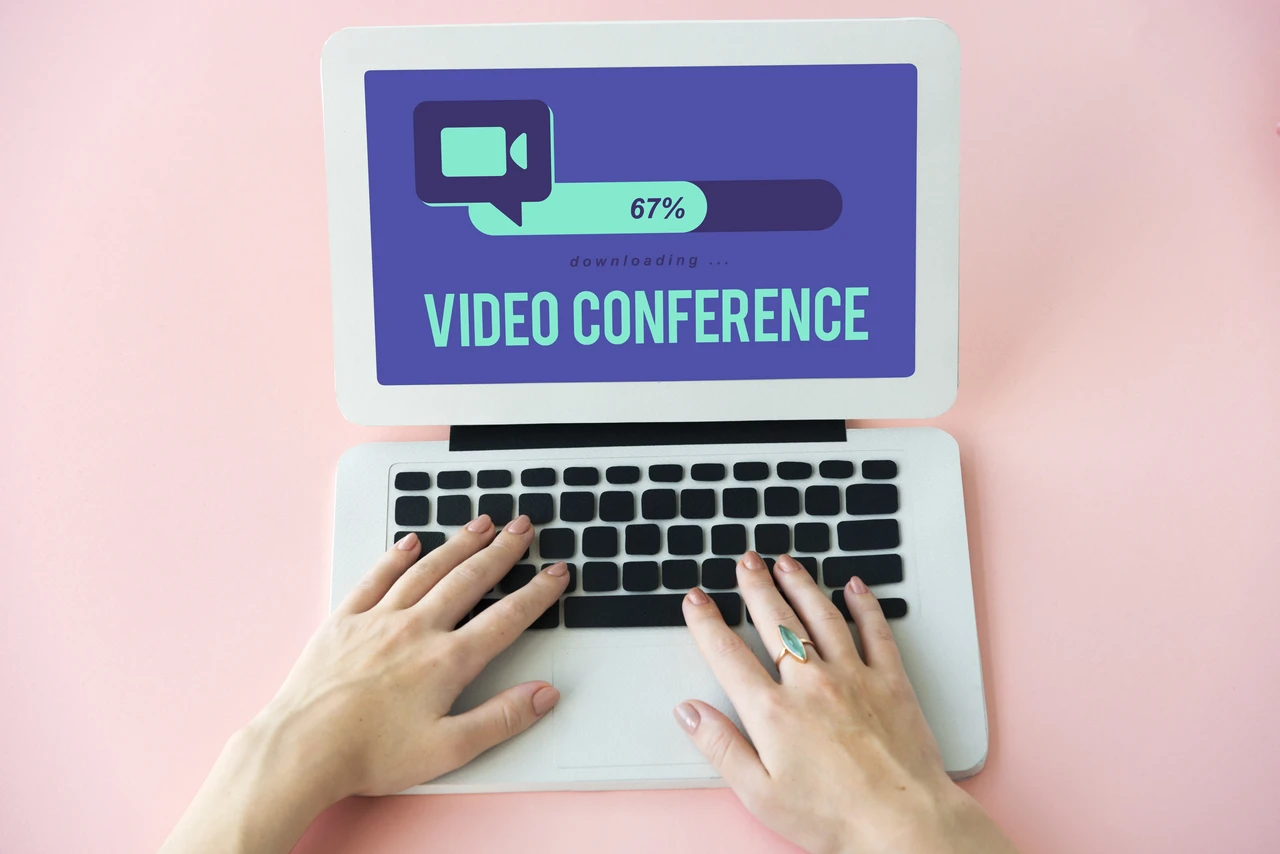Listen to article
In today’s fast-evolving digital landscape, understanding the current state of social media is more critical than ever for businesses. It’s no longer enough to simply “be” on social media; you need to understand the trends, the demographics, the platforms, and the strategies that drive success.
Are you leveraging video content effectively? How does B2B social media marketing differ from B2C? And just how much are businesses investing in social media advertising, anyway? As social media becomes further integrated into business operations, it’s important to be informed.
This article dives into current statistics on social media use in business, offering a data-backed exploration of where social media is today, and where it’s headed so you can stay ahead of the curve.
Social Media Engagement: The Numbers Behind a Digital Culture Shift
The influence of social media on modern life is undeniable, shaping how we communicate, consume content, and even make purchasing decisions. For businesses, it’s no longer just about being present on these platforms—it’s about understanding who’s using them, how they’re engaging, and how to create meaningful connections. Let’s explore some compelling statistics that illustrate the depth of social media’s integration into our daily lives:
- Globally, 63.9% of the world’s population is active on social media as of February 2025, showcasing its unparalleled global reach. Source
- Social media users spend an average of 2 hours and 21 minutes per day engaging with platforms, revealing the central role these channels play in people’s daily routines. Source
- Millennials represent the most active demographic, as 69.2% are projected to use social media in 2025. Source
- Among Gen Z, female users aged 16-24 lead the way with an impressive 2 hours and 59 minutes of average daily screen time on social media. Source
The growing dominance of social media is much more than a trend—it’s a foundational pillar of modern communication. For businesses, this means developing a laser-sharp understanding of the unique patterns and preferences of different demographics. Millennials’ active presence reflects their role as engaged decision-makers, while Gen Z’s potent usage highlights their value as a future-facing audience increasingly shaping trends and markets.
Pro Tip:
Craft content that speaks directly to the behaviors and aspirations of key age groups—for instance, short, relatable video reels for Gen Z or value-driven, thought-leadership posts for Millennials. This targeted approach can enhance engagement and build long-term loyalty. Additionally, integrating social media into a broader B2B website strategy can help businesses align their online presence with the habits of these digitally-savvy audiences, ensuring a cohesive and impactful digital footprint.
Harnessing the Power of Leading Social Media Platforms
Knowing which social media platforms dominate user attention can give businesses a critical edge in today’s competitive landscape. The digital world is saturated with choices, but not all platforms are created equal when it comes to audience size, engagement potential, and demographic reach. Identifying the right platforms to prioritize can help businesses streamline resources and amplify their message where it matters most.
- Titans like Facebook, YouTube, Instagram, and WhatsApp each boast over 2 billion active users, positioning them as indispensable platforms for reaching vast and diverse audiences. Source
- TikTok, known for its dynamic short-form video content, is predicted to surpass 1.8 billion monthly active users by the end of 2025. This marks it as an essential platform for targeting Gen Z and millennial audiences who crave authentic and creative interactions. Source
Takeaway: Platform Strategy is Key to Social Media Success
The sheer scale of these platforms presents immense opportunities for businesses, but success hinges on more than just a presence. Each platform caters to unique user behaviors, preferences, and demographics, making it essential to adopt a tailored approach for creating and sharing content. For instance, while Facebook might help you connect with a multi-generational audience, TikTok can deliver deeper engagement with younger, trend-driven users.
Pro Tip:
Avoid defaulting to a one-size-fits-all strategy. Invest time in understanding the algorithm, content trends, and audience demographics of each platform. This way, you can craft platform-specific campaigns that resonate, drive engagement, and ultimately generate measurable results. Additionally, leverage tools like social listening platforms to fine-tune your strategy in real-time and stay ahead of shifting consumer behaviors.
Why Video is the Cornerstone of Social Media Marketing
As social media continues to shape how brands and consumers interact, video content has emerged as a critical tool for cutting through the noise. It’s not just about keeping up with trends—video’s ability to tell compelling stories, deliver quick bursts of information, and create an emotional connection makes it indispensable in today’s marketing landscape. From short-form videos designed for fleeting attention spans to live streams that foster real-time dialogue, businesses are leveraging video to captivate audiences on a deeper level.
- A significant 86% of businesses now rely on video as a primary marketing tool, showcasing its widespread adoption. Source
- 94% of video marketers regard it as an essential part of their strategy, underscoring its valued contribution to achieving business goals. Source
- Nearly every marketer—99%—plans to maintain or increase their use of video, highlighting its sustained relevance. Source
- 70% of businesses report creating more videos this year compared to last, indicating a clear upward trend in video investment. Source
- Live video is utilized by 46% of marketers as a dynamic way to foster real-time engagement on social platforms. Source
- Short videos are the preferred way for 69% of individuals to learn about new products or services, proving that concise, digestible content resonates. Source
- A substantial 85% of people say they’d like to see more video content from brands, signaling an unmet demand. Source
- 78% of people watch videos online weekly, and over half (55%) do so daily, reflecting consistent audience engagement. Source
- Advertisers find video to be the most effective ad format, with 32% citing it as more impactful than image ads or Instagram Stories. Source
Takeaway: Build Human Connections with Video to Stay Competitive
Video content is no longer a “nice-to-have”—it’s the backbone of successful marketing strategies. Beyond drawing attention, video allows brands to humanize their messaging, foster trust, and deliver value to an audience that craves authenticity. By paying attention to what works best for your specific audience—whether it’s tutorials, behind-the-scenes glimpses, or live Q&A sessions—you can craft a video strategy that not only boosts engagement but also deepens customer loyalty.
Pro Tip:
Maximize the impact of your videos by optimizing them for each platform’s unique features. For example, prioritize captions for sound-off viewing on Instagram, leverage YouTube’s longer format for in-depth storytelling, and use TikTok or Reels for quick, highly engaging bursts of content. Experiment with storytelling angles and analytics to continuously refine your approach.
The Shifting Role of Social Media in B2B Marketing: Investments, Strategies, and Roadblocks
Social media has evolved far beyond its origins as a B2C marketing channel—it has now firmly established itself as a cornerstone for B2B strategies. As the expectations of business buyers mirror those of everyday consumers, B2B marketers are adopting dynamic, content-rich approaches to engage and convert their audiences. From skyrocketing ad spends to the strategic importance of content personalization, the numbers below showcase the trends shaping the future of B2B social media marketing.
- B2B social ad spending is expected to grow by 46.2% in 2025, reaching $9.66 billion, showcasing the increasing prioritization of social platforms. Source
- In 2022, $270 billion was spent globally on social media advertising, demonstrating the channel’s vast influence. Source
- Social media advertising accounts for 12% of total advertiser budgets, reflecting its critical role in broader marketing strategies. Source
- By 2024, the content marketing industry is projected to reach $600 billion, underlining the value of well-crafted, engaging content. Source
- More than 50% of businesses plan to increase their content marketing budgets in 2024 to fuel growth through audience engagement. Source
- The APAC region is poised to lead the next content marketing surge, contributing 41% of the industry’s growth, with 74% of B2B marketers in APAC planning budget increases. Source, Source, Source
- Paid social media advertising ranks as one of the most effective paid channels for B2B content marketing, with 49% of marketers leveraging promoted posts for success. Source
- Social media is used by 90% of B2B marketers for content distribution, making it the top channel for sharing content. Source
- The most successful B2B marketers actively use an average of five social platforms, compared to four for less successful ones, highlighting the importance of diversifying platform strategies. Source
- LinkedIn leads as the preferred B2B platform, favored by 97% of marketers, followed by Twitter, Facebook, and YouTube. Source
- Social media posts (94%), case studies (73%), and pre-produced videos (72%) are the top three content formats for B2B marketers. Source
- A substantial 74% of B2B buyers actively use social media for research and decision-making, making platforms like LinkedIn essential for influencing purchase decisions. Source
- Despite these promising trends, 85% of B2B marketers still report struggling to attribute their efforts to measurable business results. Source
Key Takeaways and How to Stay Ahead
The data paints a clear picture: social media is a powerhouse for B2B marketing, and ignoring its potential is no longer an option. The rise of B2B ad spending, the growing significance of content marketing, and the surge in platforms like LinkedIn as decision-driving tools indicate a shift toward relationship-driven, value-first strategies. However, achieving consistent results requires more than just “being present” on social platforms. B2B marketers must focus on aligning their social media efforts with data-backed insights, tailoring content formats to purchasing behavior, and tackling common challenges like insufficient resources or team alignment.
To stand out, businesses should explore integrating AI and automation into analytics to overcome tracking and ROI attribution challenges. Additionally, APAC represents an untapped growth opportunity—with its burgeoning presence in the content marketing landscape, it’s worth developing region-specific strategies to cater to this audience.
Pro Tip:
Optimize your social media strategy by balancing thought leadership with actionable content. Use LinkedIn to publish in-depth industry reports and case studies, while leveraging platforms like YouTube and Instagram for tutorial-style or behind-the-scenes videos. Don’t forget to implement advanced tracking tools like UTM parameters or AI-powered analytics to link your efforts directly to business outcomes, proving your marketing value with confidence.
Conclusion
The statistics on social media use in business reveal a dynamic, ever-evolving landscape that’s brimming with opportunities for companies willing to adapt. From the undeniable dominance of platforms like Facebook and LinkedIn to the growing influence of video content, social media remains a powerhouse for both B2C and B2B marketing. The rise of AI and its integration into content creation and customer insights further highlights the transformative potential of technology in shaping how businesses connect with their audiences.
For businesses, the takeaway is clear: success on social media hinges on understanding your audience, choosing the right platforms, and crafting content that resonates on a personal level. Whether it’s leveraging short-form videos to engage Millennials or using LinkedIn to foster professional relationships, your social media efforts should be as strategic as they are creative.
If you’re ready to supercharge your business, don’t hesitate to get in touch with our full-service marketing pros for a free quote. Let’s work together to transform these insights into actionable strategies that drive measurable results!
About Social Media Use in Business: Key Statistics and Insights
This article was written by the Scopic Studios team and reviewed by Araksya Hakobjanyan, SEO Lead at Scopic Studios.
Scopic Studios delivers exceptional and engaging content rooted in our expertise across marketing and creative services. Our team of talented writers and digital experts excel in transforming intricate concepts into captivating narratives tailored for diverse industries. We’re passionate about crafting content that not only resonates but also drives value across all digital platforms.
Note: This feature blog’s image are sourced from Freepik.

































































































































































































































































